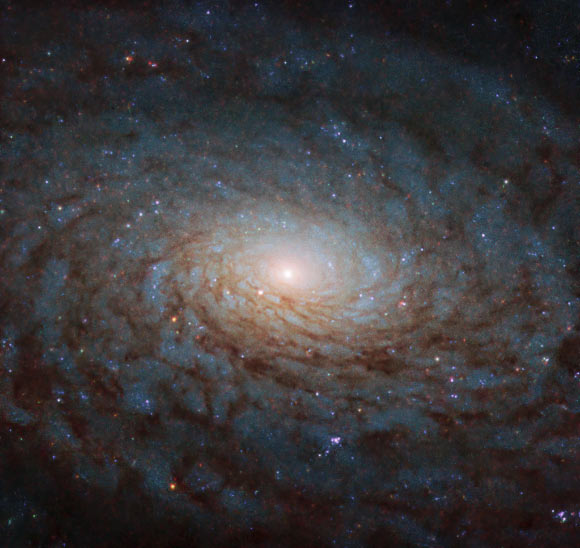Hubble Captures Detailed Image of NGC 4380 | Astronomy – Sci-News.com
The NASA/ESA Hubble Space Telescope has produced a spectacularly detailed image of a galaxy called NGC 4380.

This Hubble image reveals a detailed view of part of the disk of the spiral galaxy NGC 4380. The image is made up of observations from Hubble’s Wide Field Camera 3 (WFC3) in the infrared and optical parts of the spectrum. It is based on data obtained through three filters. The color results from assigning different hues to each monochromatic image associated with an individual filter. Image credit: NASA / ESA / Hubble / P. Erwin.
NGC 4380 is a spiral galaxy located in the constellation of Virgo.
Otherwise known as LEDA 40507, UGC 7503 and IRAS 12228+1017, it lies at a distance of 40 million light-years.
NGC 4380 was discovered on March 10, 1826 by English astronomer John Herschel.
This galaxy is a member of the Virgo Cluster, a large group of about 2,000 galaxies, which in turn is near the center of a supercluster of galaxies.
NGC 4380 is approximately 50,000 light-years across and is classified as a type Sab galaxy.
“In the grand scheme of things, though, NGC 4380 is actually quite ordinary,” the Hubble astronomers said.
“Spiral galaxies like this one are one of the most common types of galaxy in the Universe.”
“These colossal collections of stars, often numbering in the hundreds of billions, are shaped like a flat disk, sometimes with a rounded bulge in the center.”
“Graceful spiral arms outlined by dark lanes of dust wind around the bulging core, which glows brightly and has the highest concentration of stars in the galaxy.”





